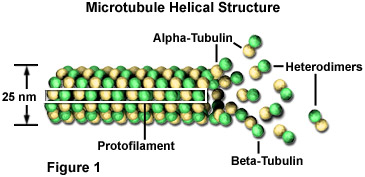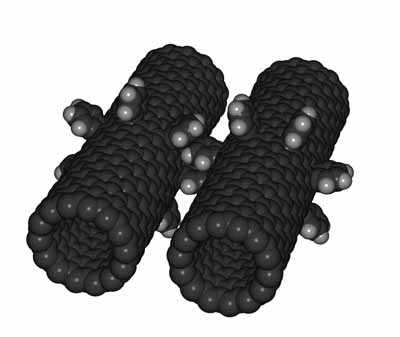Right. But it's not the details. It's the basis of many things you post (i.e. "you can't sense your heart or the position of your limbs"
No that is not what I said. Drop the limbs, they are not organs. I did say organs, such as the heart. These are the words of a real expert
Anil K Seth is a British professor of Cognitive and Computational Neuroscience at the
University of Sussex.
Are you saying he is wrong?
"you can't build a computer without microchips"
By your own words , any other method would not be as efficient. Are you suggesting that natural selection is unable to come up with an efficient system such as microtubules, as we have with microchips, or perhaps more illustrative, electric coils?
"prokaryotes are almost extinct."
Right , that was sloppy of me, even if I was really talking about eukaryotes and I mentioned prokaryotes mainly as an older, more primitive system. I was really thinking of
But I admit, if I am going to use comparisons, I should take care to present both sides accurately.
Those aren't details, they are fundamental misunderstandings. And that carries over to your credibility on other topics.
I agree and I also realize that I cannot absorb everything all at once, when people spend lifetimes studying a single phenomenon.
Nevertheless, I stand corrected and I certainly won't repeat that error
However, on a more optimistic note, I ran across this little bit of evidence in support of the role microtubulins play in the evolution of life and possible consciousness.
I am just trying to establish a fundamental platform of physical information sharing at extremely small scales (smaller than neurons).
In chemistry it is called chirality, left and right handed complimentary connectors.
IMO a microtubule may be the smallest dynamic pattern in chirality. A coil of chiral heterodimers, affording forward and backward transmission.
Abstract
Defects in microtubule-based transport are implicated in many neuropathologies.
The filamentous fungi Aspergillus nidulans and Ustilago maydis are valuable models for studying transport due to their yeast-like genetic and biochemical tractability and metazoan-like dependence on microtubule-based transport for cellular trafficking.
In these organisms the role of microtubules in nuclear positioning is well studied, but recent work has expanded the range of cargos to include endosomes, messenger RNA, secretory vesicles, peroxisomes, and nuclear pore complexes, reflecting the diversity of metazoan systems.
Furthermore, similarities in transport mechanisms exist between filamentous fungi and metazoan neurons, demonstrating the suitability of A. nidulans and U. maydis for studying the molecular basis of transport-related neuropathologies such as lissencephaly, motor neuron disease, and Perry syndrome.
https://www.ncbi.nlm.nih.gov/pmc/articles/PMC3518651/
Humans use coils for a variety of purposes also...

[/quote][/QUOTE]
Although cytoplasmic tubules and fibers have been observed in bacteria, some with diameters similar to those of eukaryotes, no homologies to eukaryotic microtubules have been established. Certain groups of bacteria including azotobacters,
cyanobacteria, enteric bacteria, and spirochetes
have been frequently observed to possess microtubule-like structures, and others, including archaebacteria, have been shown to be sensitive to drugs that inhibit the polymerization of microtubules. Although little biochemical or molecular biological information is available, the differences observed among these prokaryotic structures suggest that their composition generally differs among themselves as well as from that of eukaryotes. We review the distribution of cytoplasmic tubules in prokaryotes, even though, in all cases, their functions remain unknown[/quote]
https://www.ncbi.nlm.nih.gov/pubmed/7968920
Cyanobacteria are prokaryotic cells (the simplest form of modern carbon-based life) in that they lack a DNA-packaging nucleus. Bacteria, including the photosynthetic cyanobacteria, were the only form of life on Earth for the first 2 billion years that life existed on Earth.
http://www.indiana.edu/~geol105b/images/gaia_chapter_10/stromatolites.htm
And here is where I made a mistake. I recalled something about stromatolites and checked up on my hunch,
Formation,
Time lapse photography of modern microbial mat formation in a laboratory setting gives some revealing
clues to the behavior of cyanobacteria in stromatolites. Biddanda
et al. (2015) found that cyanobacteria exposed to localized beams of light moved towards the light, or expressed
phototaxis, and increased their
photosynthetic yield, which is necessary for survival.
[12] In a novel experiment, the scientists projected a school logo onto a petri dish containing the organisms, which accreted beneath the lighted region, forming the logo in bacteria.
[12] The authors speculate that such
motility allows the cyanobacteria to seek light sources to support the colony.
[12] In both light and dark conditions, the cyanobacteria form clumps that then expand outwards, with individual members remaining connected to the colony via long tendrils. This may be a protective mechanism that affords evolutionary benefit to the colony in harsh environments where mechanical forces act to tear apart the microbial mats.
Thus these sometimes elaborate structures, constructed by microscopic organisms working somewhat in unison, are a means of providing shelter and protection from a harsh environment.
https://en.wikipedia.org/wiki/Stromatolite
But stromatolites went almost entirely extinct, except for few small areas.
Stromatolite-building communities include the
oldest known fossils, dating back some 3.5 billion years when the environments of Earth were too hostile to support life as we know it today. We can presume that the microbial communities consisted of complex consortia of species with diverse metabolic needs, and that competition for resources and differing motility among them created the intricate structures we observe in these ancient fossils. Microbial communities diversified through time, with
eukaryotic organisms eventually joining the mix.
A die-off began, a mass extinction killing countless species of bacteria. It was
the Great Oxygenation Event. But there was worse to come.

A cyanobacteria bloom in Guatemala’s Lake Atitlán created a vast dead zone in the otherwise fecund lake, showing that billions of years later these bacteria can still cause grief.
https://slate.com/technology/2014/0...n-event-the-earths-first-mass-extinction.html
Anyway.............................





